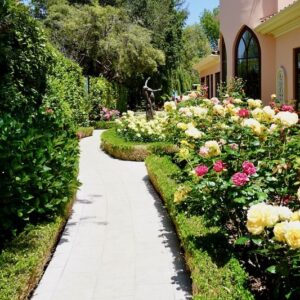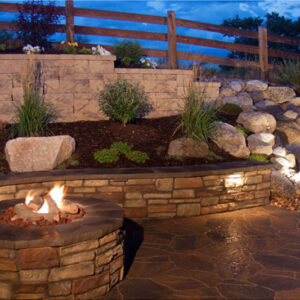Think you’ve spotted Japanese knotweed on your property? While invasive vegetation is likely to become a major problem if left untreated, there are several ways to clear it from your premises. By assessing how severe your infestation is, invasive vegetation experts will be able to recommend the most effective, sustainable method to choose.
If you’re in any doubt over the best course of action to take, it’s always best to seek professional support to stop any further damage from taking place.
Step to follow if found Japanese Knotweed on your property
1. Check the size of the affected area
Whether you’ve noticed the invasive weed in your garden or on your commercial premises, the very first step you need to take is to assess the size and severity of the outbreak. It’s important to ensure your infestation is contained as quickly as possible. This is crucial for two reasons; as well as helping you assess just how serious the infestation is, the speed with which the plant grows means you have to act fast in order to contain it. Once you have an idea of the extent of the damage, you can begin to consider the best course of action for removal.
2. Don’t attempt to remove the weed yourself
Next up, it’s important to ensure you leave the weed alone while you consider your options. While it might seem tempting to try and remove the plant yourself, it’s highly recommended that you seek professional advice as soon as you spot it. Pulling up roots by hand allows the roots and rhizomes to spread and seed elsewhere. Even if you think you’re being as careful as possible, there’s always the chance fragments can fly and seed without you noticing.
3. Research registered waste carriers and disposal teams
Because the plant can be so harmful to local environments, Japanese knotweed is now illegal to dispose of without going through the correct procedures, with fly tippers facing fines or potential prison sentences. Whether you’re planning to remove the plant waste yourself, or you’re enlisting professional support, it’s a good idea to do some research into local registered waste carriers. Bear in mind that as well as a licensed waste disposal unit, you’ll also need to consider the type of carrier that will transport the waste stalks and fragments away from your site.
It’s also worth noting that while you are responsible for stopping Japanese knotweed from spreading to other properties or the environment around your building, you’re under no legal responsibility to declare it to your neighbours, local authorities or those around you.
4. Consider the best course of removal for you
There are several options available when it comes to eradicating a Japanese knotweed outbreak. Depending on the premises your outbreak is situated in, your invasive vegetation specialists can recommend either a herbicide treatment, on site removal or off-site disposal to safely dispose of the outbreak. These options differ in terms of how much disruption they will cause to your premises. If you need the infestation to be treated more quickly, on site removal or off site disposal might be more suitable options for you. However, if you’re looking for a more sustainable removal option that won’t disrupt your day to day life, a herbicidal treatment might be the best option for you. Whichever option you go for, it’s crucial to enlist expert support to ensure the invasive vegetation removal is handled as carefully and professionally as possible.
5. Keep an eye on the area over time
Every Japanese knotweed outbreak will take, on average, 3-5 years to remove fully. Thanks to the persistent nature of the plant, it’s very likely the plant will grow back, even after the roots die back in winter. Even once the outbreak has been treated over the course of several seasons, you should survey your property regularly to ensure no rhizomes or roots have been left behind. By doing this, you can prevent another outbreak from taking place, and reduce the need for another invasive removal treatment.




